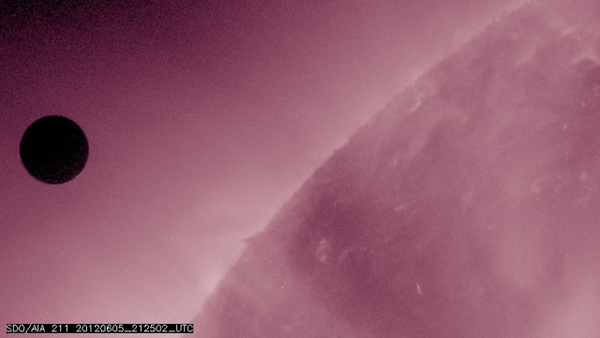 Transit of Venus 2012
Transit of Venus 2012
Many of us were thrilled to watch the transit of Venus over the last two days, whether live or in wonderful space footage such as this from NASA. By now most everyone knows that the transit of Venus is a twice-a-century event (if you miss it today, you have to wait 105 years for the next one) during which we can see Venus travelling across the face of the sun. What most people don't know is that efforts to study the transit of Venus in 1874 were very influential on the development of moving picture cameras and thus, on the development of cinema.
Pierre-Jules Cesar Janssen was an astronomer and part of a team that was travelling to Japan in 1874 to witness the passage of Venus across the face of the sun. You can read his account of his research (in French) here. He spent two years preparing a photographic device to register the event. The “rifle” registered images on a light sensitive wheel. His second version was able to register 48 images in 72 seconds and succeeded in taking the pictures he wanted of Venus crossing the face of the sun. These images enabled him to prove one of his theories, that the solar corona was in fact an attribute of the sun itself and not an effect of looking at the sun through the Earth’s atmosphere. Janssen’s rifle was used to photograph solar eclipses for many years.
The year before the Venus Transit Janssen demonstrated his photographic rifle, based on Plateau’s phenakistiscope, to the Academy of Sciences in Paris.
Étienne-Jules Marey was present at this demonstration, and in influenced him to develop his own chronophotographic gun which he used in the scientific study of motion. However Marey's gun is considered an important step in the development of cinematography. Marey trained Georges Demeny, who went on to invent a moving picture camera, the Biographe, that he sold to Gaumont.
For a history of the studies of the transit of Venus, go here.